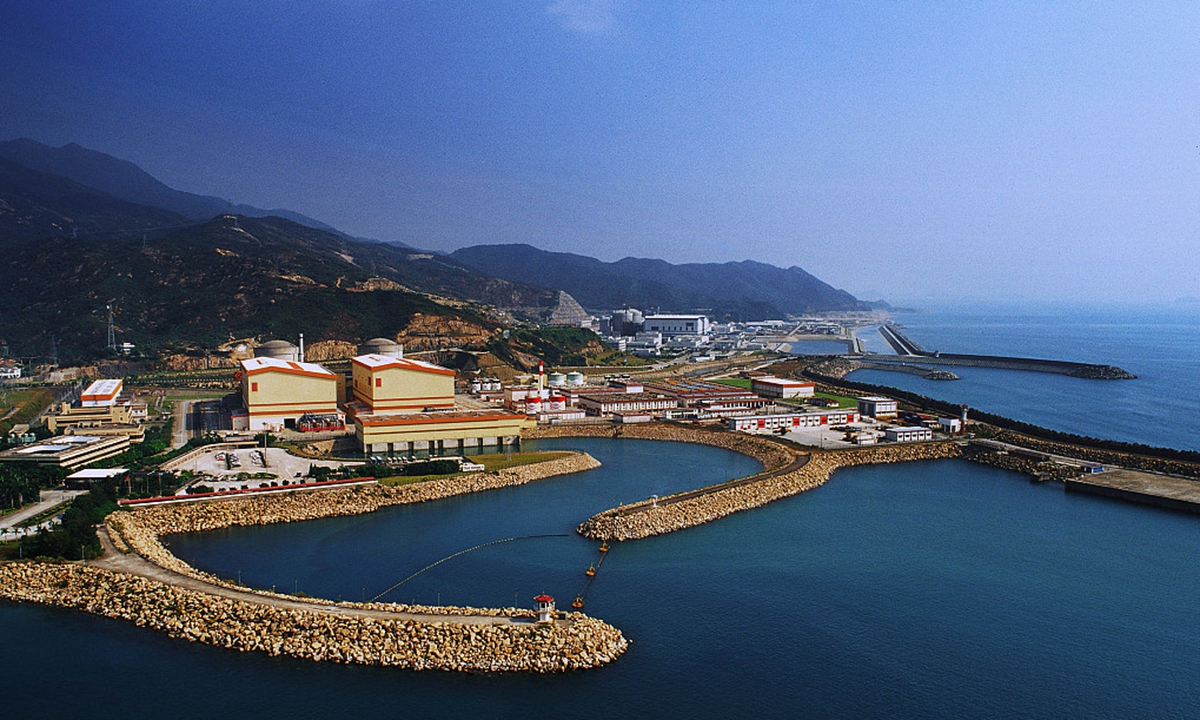
A view of the Daya Bay Nuclear Power Station in South China's Guangdong Province File Photo: CFP
The Daya Bay Nuclear Power Plant, China's first large-scale commercial nuclear power plant located in Shenzhen, South China's Guangdong Province, announced on Tuesday a record of 10,000 days of safe operations and the cumulative power supply of 380 billion kilowatt-hours, an important milestone for the country's nuclear plant development.
As the first commercial nuclear power plant of this kind built in the Chinese mainland, it has set a high bar for domestic nuclear power industry while playing a key role in providing the much-needed electricity supply for regional economic development and effectively reducing carbon emissions in an unprecedented level.
The plant has played an active role in meeting the power supply of the Greater Bay Area and improving the country's energy structure. Every year, the Daya Bay Nuclear Power Plant supplies more than 10 billion kilowatt-hours of electricity to Hong Kong, accounting for one quarter of the city's electricity consumption.
The plant also plays a significant role in reducing China's carbon footprint. As of Tuesday, the reduction in carbon emissions generated by the of the Daya Bay Plant were equivalent to planting nearly 900,000 hectares of forest, according to the China General Nuclear Power Group, one of the operators of the plant.
The construction of the plant officially began on August 7, 1987, with units 1 and 2 put into commercial operation on February 1 and May 6, 1994. As the first million-kilowatt-class commercial nuclear power plant in the Chinese mainland, its launch marked China's first step into nuclear power.
The most important benchmark for a nuclear plant operation is its safety. Since its inauguration, the safety operation index of the Daya Bay Plant has put it amongst the safest facilities in the world and it achieved full marks in the 2020 World Association of Nuclear Operators index benchmarking, and composite index.
